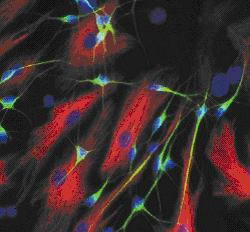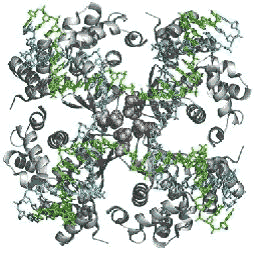
Recent technological developments in biological science, and in particular in molecular biology, have led to a massive increase in the amount of data available in biology and medicine. The volume of DNA and protein sequence data alone is enormous, and is increasing exponentially. Sequence data are just the beginning of the information explosion in the life sciences. New floods of data will emerge from many areas: microarrays designed to study spatial and temporal patterns of gene expression, experiments to understand how proteins, DNA and RNA interact with each other, from genomic technology applied to cancer, from studies of molecular variation in natural populations, and from studies that show how these variants relate to phenotype. The arrival of extensive data has led to the realisation that the life sciences must become more quantitative. This has fuelled the growth of the field of computational biology and has created tremendous opportunities for cross-disciplinary research. As a result, the Cambridge Computational Biology Institute (CCBI) has been set up to stimulate and draw together expertise in computational biology from across Cambridge University and beyond.
 |
| Figure 1 : The DNA Helix - The volume of DNA sequence data is increasing exponentially. |
The Cambridge Computational Biology Institute (CCBI) aims to :
- Carry out basic research - Create new cross-Cambridge research projects - Co-ordinate grant funding opportunities - Stimulate collaborations within and beyond Cambridge
- Provide access to computational resources for researchers at Cambridge
- Run workshops, conferences and seminars - Launch new degree programmes - Create a consortium of large and small companies
Research As one of its first programmes of research the CCBI will address the prevention and treatment of common diseases by modulation of the underlying causes. It will make use of the expertise in Cambridge in genetics, computer science, clinical resources, epidemiology and maths &statistics to investigate the genes, mechanisms, causes and prevention of common diseases. It will undertake genome-wide surveys of DNA polymorphisms in cancer, diabetes &obesity, and immune-mediated disease such as, autoimmunity, allergy and tuberculosis. Studies of disease-associated genes and pathways will complement biological, structural and clinical research. The aim is to begin to fuse quantitative biology into clinical care.
 |
| Figure 2 : Nerve cells (neurones in green, astrocytes in red) generated from neural stem cells grown in cell culture. |
In addition to the wide range of research already in progress in the member departments of the CCBI, it is intended to develop a number of central research themes. Two themes already identified and being supported by the Cambridge-MIT Institute are:
Transformation of drug discovery and development by creating high throughput assays using stem cells that have been cultured in microfabricated bioreactors.
Application of systems biology and stem cell research to the study and identification of drug targets in complex diseases such as cancer and inflammation.
Computational biology is a priority of the University's Schools of Biology, Clinical Medicine, Physical Sciences, and Technology. Almost every department in each of these Schools is a participant in the Institute, as are the European Bioinformatics Institute, the Wellcome Trust Sanger Institute, the Medical Research Council's Laboratory of Molecular Biology, Cambridge and the Babraham Institute.
 |
| Figure 3 : The crystal structure of the Holliday junction DNA, a universal intermediate of DNA recombination, bound to a RuvA tetramer from E. coli. |
It is also intended to form a consortium of large computer and pharmaceutical companies to support the Institute and collaborate in its work. It is hoped also to draw in some of the numerous small biotech and high-tech companies in the Cambridge region.
The Institute will work closely with the Cambridge eScience Centre, and the scientists who participate in the initiative will have access to massive computing resources, including those of the Cambridge-Cranfield High Performance Computing Facility, and to expert advice in their use.
Education There is a world-wide shortage of high-quality computational biologists. In order to address this, an important part of the CCBI will be a new MPhil degree will take advantage of the unique strengths of Cambridge in the biological, medical, physical and mathematical sciences. The eleven-month course is aimed at introducing students to computational biology and other quantitative aspects of modern biology and medicine.
 |
| Figure 4 : Delegates at a recent CCBI Industry Information Day, Centre for Mathematical Sciences |
It will also provide a grounding in business management and the management of technology and innovation. It is intended both for those whose first degree is in biology and for computer scientists, mathematicians and others wishing to learn about the subject in preparation for a PhD course or a career in industry and commerce. The course has been developed by the CCBI and will be run by the Department of Applied Mathematics and Theoretical Physics at the Centre for Mathematical Sciences. It is funded by the CMI. The course director is Professor Simon Tavaré.
Engaging Industry A key component of the CCBI is to facilitate and encourage exchange of knowledge between academic researchers and their industrial counterparts in businesses of all sizes. It will also forge close working relationships with and between those companies that are leading the development, and application, of computational biology. It will allow the CCBI to develop and integrate the interests and requirements of industry, in particular in the development of pharmacogenetics and genomics and the discovery of drugs that are more specifically designed to the underlying causes of disease.
About the author : Dr. Karen Smith is a neuroanatomist and the Business Director of the Cambridge Computational Biology Institute, University of Cambridge
For general information, contact: Cambridge Computational Biology Institute, Centre for Mathematical Sciences, Wilberforce Road, Cambridge CB3 0WA
|  |











Comments
Add a comment